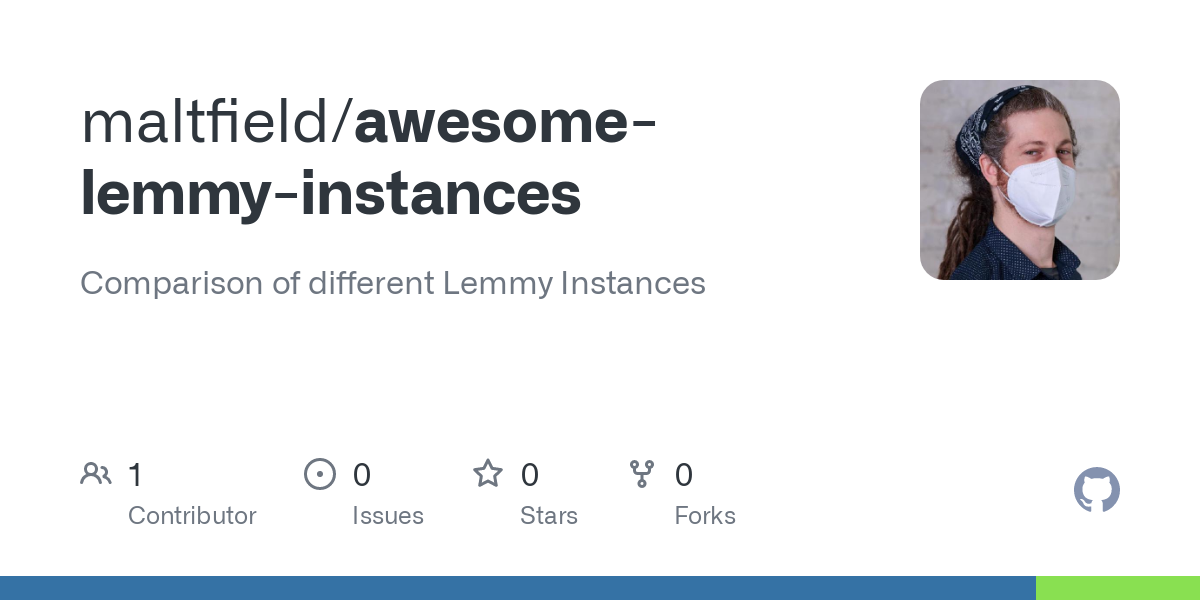- cross-posted to:
- lemmy@lemmy.ml
- opensource@chat.maiion.com
- cross-posted to:
- lemmy@lemmy.ml
- opensource@chat.maiion.com
I created a repo on GitHub that has a table comparing all the known lemmy instances
Why?
When I joined lemmy, I had to join a few different instances before I realized that:
- Some instances didn’t allow you to create new communities
- Some instances were setup with an
allowlistso that you couldn’t subscribe/participate with communities on (most) other instances - Some instances disabled important features like downvotes
- Some instances have profanity filters or don’t allow NSFW content
I couldn’t find an easy way to see how each instance was configured, so I used lemmy-stats-crawler and GitHub actions to discover all the Lemmy Instances, query their API, and dump the information into a data table for quick at-a-glance comparison.
I hope this helps others with a smooth migration to lemmy. Enjoy :)



Translation merged. Actual HTML in full PR. Once/if @nutomic@lemmy.ml approves, we’ll be… Nevermind, he just approved it. He said it’ll be live in an hour or two.
There wasn’t really anything that resembled typescript changes ultimately. The submoduled translations were the only real time sink there.
Awesome, thank you! 🚀
I see these changes, but I don’t understand how the i18n stuff works
Where’s the file/commit for the actual text stored for
instance_comparisonandinstance_browser?Took me a little while, too. The i18n stuff is all in the translations repo (which is why I needed to PR that one, too and first). You won’t find it anywhere in the active repo (I think this is a flaw, and the joinlemmy translation stuff at least should be in the same repo. But the idea makes sense to not repeat translations that show up in other projects)
On build-run, the translation process runs, which seems to “guess” any lines in non-english that it discovers. I didn’t dig too deeply, but it wasn’t immediately obvious how it knew to check English for the originals, only that English has no retranslation tool attached to it.
Ok, thanks. I see the i18n text changes were here:
18n is probably good, but it does really make it harder for folks to collaborate. It totally stopped me from contributing. Thank you for your help <3
Yeah. It’s super-important to have, and nothing is simpler for what it does, but that doesn’t make it simple itself.
Of course, trying to translate in-flight with English HTML would be worse.